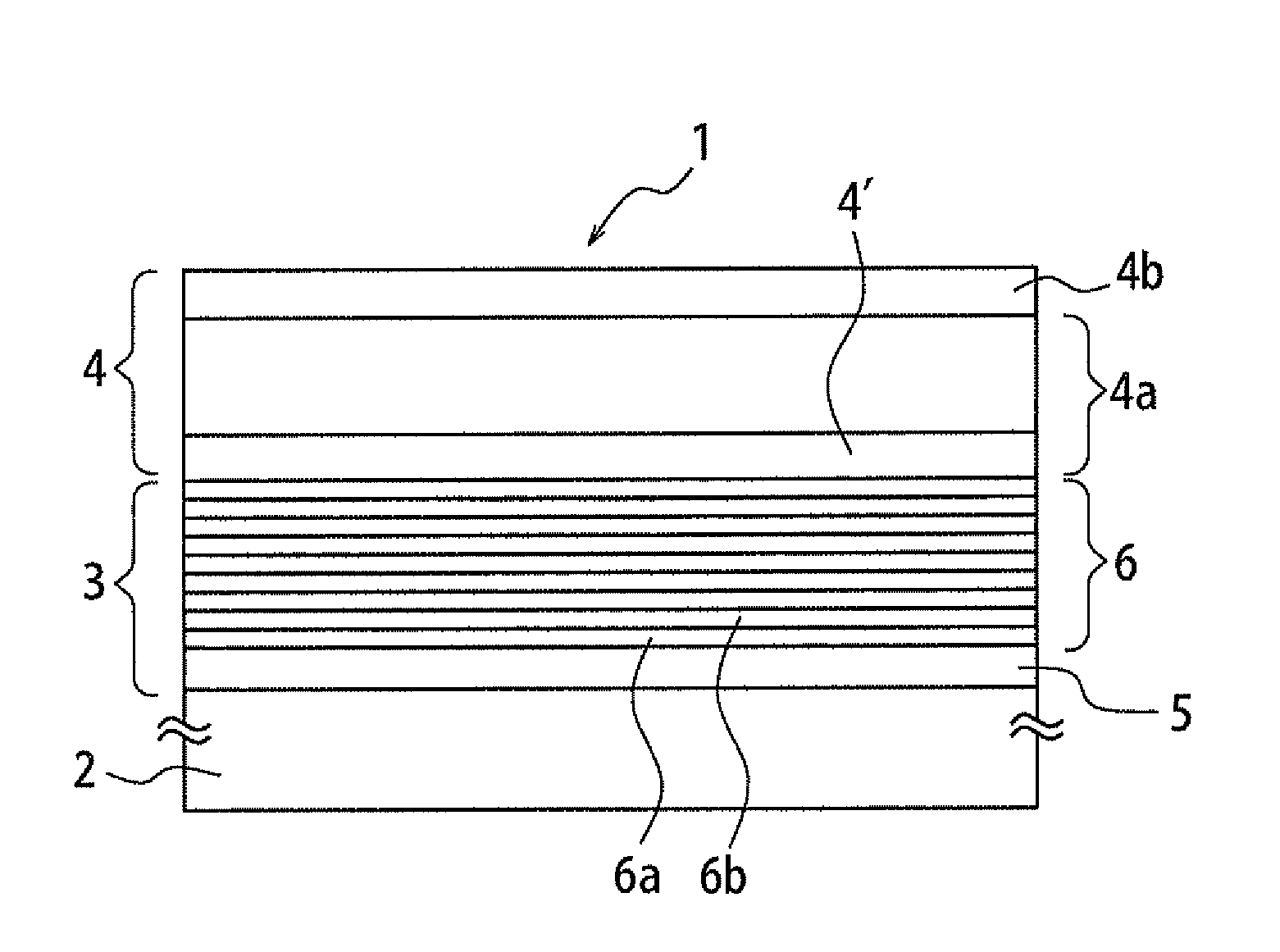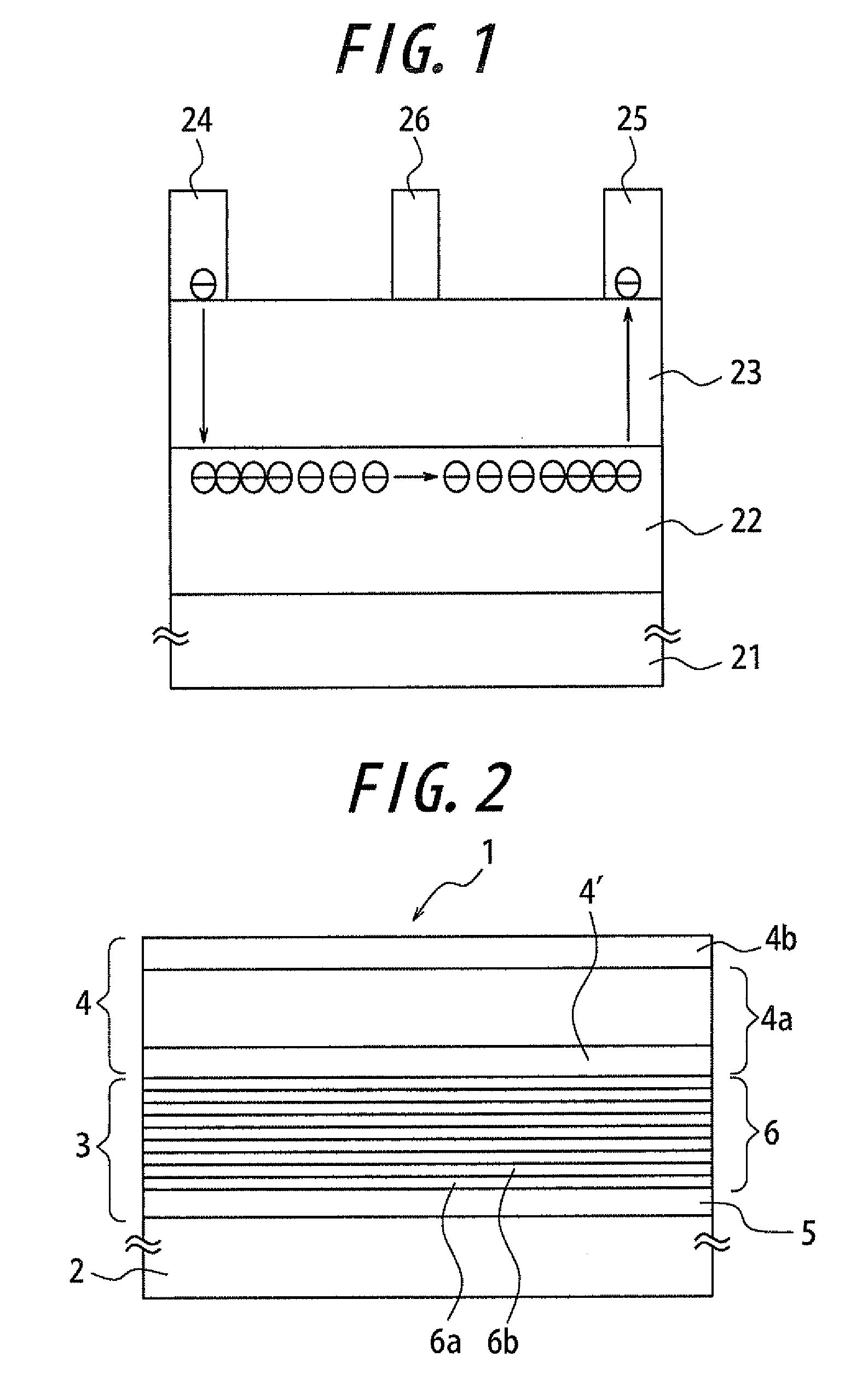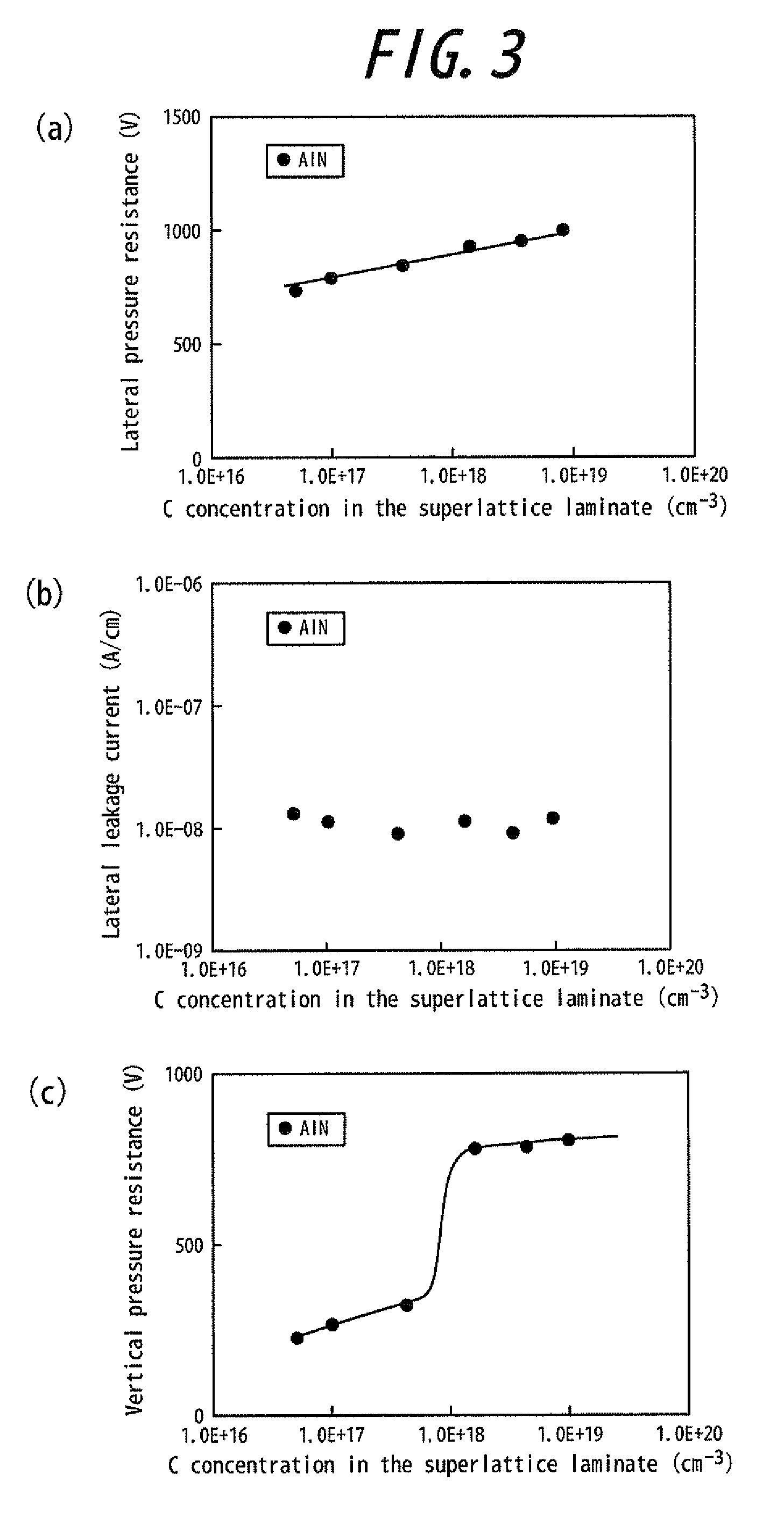Epitaxial substrate for electronic device and method of producing the same
a technology of electronic devices and substrates, applied in the direction of semiconductor devices, electrical apparatus, transistors, etc., can solve the problems of increasing power consumption, difficult to make an insulating sic substrate have a higher resistance, and heat generation problems, so as to improve the lateral breakdown voltage characteristics, improve the lateral breakdown voltage, and reduce the lateral leakage current
- Summary
- Abstract
- Description
- Claims
- Application Information
AI Technical Summary
Benefits of technology
Problems solved by technology
Method used
Image
Examples
experiment example 1
[0042]On each of 300 μm-thick 3 inch 6H—SiC (0001) plane single crystal substrates having a resistivity of 1×10−1 Ω·cm, 10 Ω·cm, and 100 Ω·cm, an initial growth layer (AlN material, thickness: 100 nm) and a superlattice laminate (AlN, film thickness: 4 nm and Al0.15Ga0.85N, film thickness: 25 nm, 85 layers in total) were grown to form a buffer. A channel layer (GaN material, thickness: 1.5 μm) and an electron supply layer (Al0.25Ga0.75N material, thickness: 20 nm) were epitaxially grown on the superlattice laminate to form a main laminate having a HEMT structure. Thus, Samples 1 to 3 were obtained. The concentration of C in the superlattice laminate was changed, and the concentration of C in a portion of the main laminate on the buffer side was in the range of 1.5×1018 / cm3 to 2.0×1018 / cm3 in each result. Further, a portion of the channel layer on the electron supply layer side had a C concentration in the range of 0.8×1016 / cm3 to 3.5×1016 / cm3. The growth temperature and pressure of ...
experiment example 2
[0052]Samples 4 to 6 were fabricated by similar methods to Samples 1 to 3 in Experiment Example 1 except that the growth pressure of the superlattice laminate was set at 10 kPa, the concentration of C in the portion of the main laminate on the buffer side was changed, and the growth temperature and pressure of each layer were set as shown in Table 2. P2 in the table was controlled to control the C concentration, and the deposition pressure was reduced to increase the C concentration. The concentration of C in the superlattice laminate was in the range of 1.5×1018 / cm3 to 2.5×1018 / cm3 in each result.
[0053]
TABLE 2GrowthGrowthpressuretemperatureLayer(kPa)(° C.)Initial growth layer10700Superlattice laminate101025Channel layer (buffer side)P2 (1-120)1025Channel layer (electron supply layer side)1001075electron supply layer101025
[0054]FIG. 4(a), FIG. 4(b), and FIG. 4(c) show measurement results of the lateral breakdown voltage, the lateral leakage current, and the vertical breakdown voltag...
experiment example 3
[0057]Sample 7 was fabricated by a similar method to Sample 2 in Experiment Example 1 except that the initial growth layer was made of a GaN material (thickness: 20 nm) grown at 700° C., and the growth temperature and pressure of each layer were set as shown in Table 3.
[0058]
TABLE 3GrowthGrowthpressuretemperatureLayer(kPa)(° C.)Initial growth layer10700Superlattice laminateP1 (1-120)1025Channel layer (buffer side)101025Channel layer (electron supply layer side)1001075electron supply layer101025
[0059]When the surface of each epitaxial substrate fabricated in the experiment example was observed under an optical microscope (100 power), many cracks were found to generate. The cracks were generated in the entire surface of the wafer, which made it impossible to fabricate an experimental device.
PUM
 Login to View More
Login to View More Abstract
Description
Claims
Application Information
 Login to View More
Login to View More - R&D
- Intellectual Property
- Life Sciences
- Materials
- Tech Scout
- Unparalleled Data Quality
- Higher Quality Content
- 60% Fewer Hallucinations
Browse by: Latest US Patents, China's latest patents, Technical Efficacy Thesaurus, Application Domain, Technology Topic, Popular Technical Reports.
© 2025 PatSnap. All rights reserved.Legal|Privacy policy|Modern Slavery Act Transparency Statement|Sitemap|About US| Contact US: help@patsnap.com



